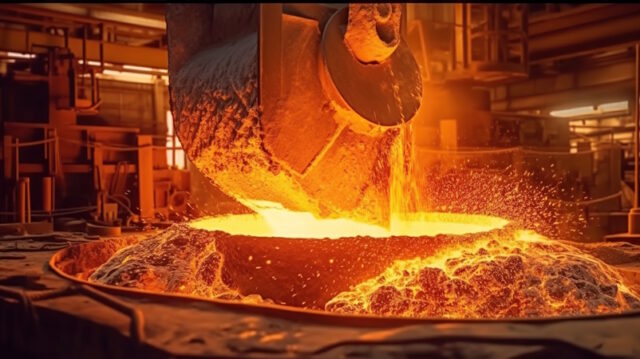
With the threat of global warming becoming more and more deadly, heavy industries face growing pressure. They must mitigate their environmental impact and take the road towards carbon neutrality.
Of course, the towering chimneys and diesel-hungry machinery of these industrial giants may seem incompatible with carbon neutrality. But upon a closer look, one can still find promising solutions to this issue at hand.
The Challenge of Carbon Neutrality
Here’s the thing: heavy industries, such as steel, cement, and petrochemicals, contribute significantly to global carbon dioxide emissions. Petrochemical and chemical production amounts to around 6.1 percent of the total global greenhouse gas emissions. Steel production, on the other hand, accounts for about 7 percent of the total greenhouse gas emissions globally.
Can you still achieve carbon neutrality across these industries? Absolutely. Will achieving carbon neutrality in these sectors be easy? Not at all, given their reliance on energy-intensive processes and fossil fuels. After all, the very nature of their operations – burning fuels and producing heat – means that carbon emissions are embedded in their DNA.
But the challenge here isn’t just technical; it’s also economic. Transitioning to greener methods involves significant investment, and industries must balance sustainability with profitability. Despite these hurdles, many companies are embracing the shift, driven by regulatory pressures, consumer demand, and a genuine commitment to addressing climate change.
Tackling Carbon Emissions with Cutting-Edge Solutions
Tackling carbon emissions in heavy industries means getting creative and going straight to the source of the problem. Solid-state carbon capture is a game-changer here, making it easier to trap CO₂ before it even has a chance to hit the air. It uses these advanced materials that basically lock onto CO₂ in flue gas, which is the stuff that comes out during industrial processes. The result? Way fewer emissions.
Carbon capture technology as a whole is gaining traction as industries look for practical ways to meet carbon neutrality goals. Atoco explains that such technologies capture CO2 from industrial emissions. The captured CO2 is then either stored underground or repurposed for other uses like creating synthetic fuels. Such carbon capture solutions are particularly important for industries where switching to renewable energy is not yet feasible.
Flue gas treatment is another big piece of the puzzle. It’s all about scrubbing out the nasty stuff from the gases industries release. When you throw carbon capture tech into the mix, you get a two-for-one deal: cutting CO₂ levels while cleaning up other pollutants too. This not only helps fight climate change but also gives people living nearby cleaner air to breathe.
Also, let’s not forget renewable energy – it’s a huge deal when it comes to achieving carbon neutrality. Switching industrial operations to solar, wind, or hydropower cuts back on fossil fuels and slashes emissions right at the source. Some companies are even trying hybrid setups, where they run on clean energy while finding ways to store or reuse the carbon they’ve captured.
The Economic Incentives Driving Change
Going green isn’t just about saving the planet; it’s also a smart business move.
Governments worldwide are introducing carbon taxes and emissions trading schemes. Right now, there are 30 carbon taxes that have been implemented globally. These taxes and schemes make it financially viable for companies to adopt carbon-neutral practices.
Subsidies and grants for renewable energy projects further incentivize the shift, allowing businesses to offset initial costs.
More importantly, sustainability has become a key selling point for customers and investors alike. Brands that can demonstrate their commitment to reducing industrial emissions often find themselves rewarded with increased loyalty and market share.
By investing in carbon-neutral technologies, industries aren’t just complying with regulations; they’re building a competitive edge.
A Commitment to the Future
Quick reality check: the journey toward carbon neutrality in heavy industries? It’s still in its early stages, but the progress towards carbon neutrality is being made, and so far, it’s looking promising.
Heavy industries need to understand one thing: the ultimate goal isn’t just to reduce carbon dioxide emissions. These industries must reimagine industrial processes altogether. This requires a long-term commitment, not just from companies but from governments, researchers, and consumers. Together, we can pave the way for a future where industrial progress no longer comes at the expense of our planet.
Heavy industries have long been seen as the villains of global warming, but they are also uniquely positioned to become agents of change. The challenge is immense, but so is the opportunity to redefine what heavy industry can mean in a world committed to combating climate change.
Disclaimer
The information contained in South Florida Reporter is for general information purposes only.
The South Florida Reporter assumes no responsibility for errors or omissions in the contents of the Service.
In no event shall the South Florida Reporter be liable for any special, direct, indirect, consequential, or incidental damages or any damages whatsoever, whether in an action of contract, negligence or other tort, arising out of or in connection with the use of the Service or the contents of the Service. The Company reserves the right to make additions, deletions, or modifications to the contents of the Service at any time without prior notice.
The Company does not warrant that the Service is free of viruses or other harmful components












